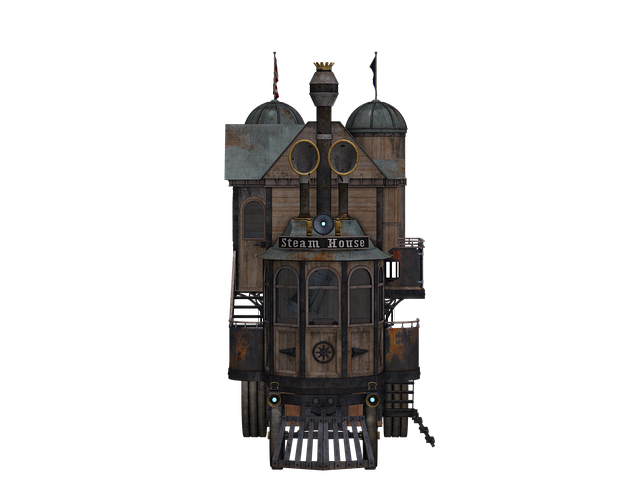Motion sensors integrated with fire and carbon dioxide (CO2) sensors in smart home systems offer a powerful solution for enhancing safety in urban environments. These advanced devices provide early detection of fires and hazardous CO2 levels, offering crucial evacuation time and activating alarm systems to alert residents and emergency services promptly. By linking to automation, they improve security, energy efficiency, and quality of life for city dwellers, making them vital tools for modern urban homes. Continuous advancements in sensor technology and connectivity promise even more efficient hazard detection, with widespread adoption driving safer, responsive cities that save lives.
“In today’s densely populated urban areas, ensuring safety from fire and carbon dioxide (CO2) hazards is paramount. This article explores an innovative solution: integrated fire and CO2 sensors, designed to enhance urban safety networks. We delve into the understanding of urban fire and CO2 risks, highlighting the pivotal role these sensors play in early detection. Additionally, we examine the advantages of integrating motion sensors in urban homes for proactive safety measures. The piece concludes with insights into implementation challenges and future prospects, offering a comprehensive guide to this game-changing technology.”
- Understanding Urban Fire and Carbon Dioxide Risks
- The Role of Integrated Fire and CO₂ Sensors
- Benefits of Motion Sensors in Urban Homes
- Implementation and Future Prospects for Safety
Understanding Urban Fire and Carbon Dioxide Risks

Urban environments, with their dense populations and diverse buildings, present unique challenges when it comes to fire and carbon dioxide (CO2) safety. Understanding these risks is paramount for ensuring the well-being of residents and first responders. Fire, a rapid and intense chemical reaction, can spread quickly through multi-story structures, especially in close quarters where flammable materials and limited escape routes are common. Carbon dioxide, on the other hand, is an invisible gas that builds up due to human activity and combustion processes, posing asphyxiation hazards, particularly in enclosed spaces.
Integrating fire and CO2 sensors using advanced motion detection technology offers a promising solution for urban homes. These sensors can continuously monitor both heat signatures indicative of fires and rising levels of CO2. Motion sensors play a crucial role here by activating the alarm system when any unusual activity is detected, providing valuable time for residents to evacuate and enabling swift response from emergency services. By combining these technologies, smart home systems can offer comprehensive protection, enhancing urban safety and peace of mind.
The Role of Integrated Fire and CO₂ Sensors

Integrated fire and CO2 sensors play a pivotal role in enhancing urban safety, especially within residential areas. These advanced devices combine two critical components essential for early detection and response to hazardous situations. Fire sensors, with their sensitive technology, can quickly identify even the faintest traces of smoke, providing vital seconds for occupants to evacuate. Simultaneously, CO2 sensors monitor elevated levels of carbon dioxide, a potent indicator of potential fires or other atmospheric hazards.
By integrating these sensors, motion-activated systems in urban homes become more than just security devices; they transform into life-saving tools. When combined with smart home automation, these sensors can trigger alerts on mobile devices, notify emergency services, and even control ventilation systems to mitigate the effects of smoke and toxic gases. This comprehensive approach to safety ensures that residents are not only warned but also assisted in navigating potentially dangerous situations, making urban living safer and more secure.
Benefits of Motion Sensors in Urban Homes

In today’s digital era, the integration of motion sensors in urban homes is revolutionizing safety measures. These advanced devices play a pivotal role in enhancing security and peace of mind for residents. By detecting any unwanted movement within a property, motion sensors act as a robust first line of defense against potential intruders, providing an immediate alert system that can deter crime and ensure swift response from homeowners or security personnel.
Moreover, motion sensors offer convenience and energy efficiency. They enable automated control of lighting, heating, and other smart home systems, optimizing comfort while reducing energy consumption. In urban areas where space is limited, these sensors allow for optimal use of resources, contributing to a more sustainable living environment. The versatility of motion sensors makes them an indispensable tool in the pursuit of enhanced urban safety and improved quality of life for city dwellers.
Implementation and Future Prospects for Safety

The implementation of integrated fire and CO2 sensors in urban areas holds immense promise for enhancing safety. These advanced systems can be seamlessly incorporated into smart homes, public spaces, and critical infrastructure, enabling real-time monitoring and early detection of potential hazards. Motion sensors, specifically designed for urban settings, further bolster these systems by triggering alerts when unusual activity is detected, allowing for swift response times.
Looking ahead, the future prospects for safety through such integrated sensor technology are promising. With continuous advancements in sensor technology and connectivity, we can expect more sophisticated and efficient detection mechanisms. Increased adoption of smart city initiatives will facilitate the widespread deployment of these sensors, creating a safer and more responsive urban environment. This evolution is set to revolutionize disaster management, improve public security, and save lives.
Integrated fire and CO2 sensors, enhanced by motion technology, represent a significant step forward in urban safety. By deploying these smart sensors in homes, cities can proactively mitigate risks associated with both fires and carbon dioxide buildup. Motion sensors further improve response times, ensuring the well-being of residents and fostering safer urban environments. As technology advances, widespread adoption of such integrated systems could revolutionize emergency preparedness, making our cities more resilient and responsive to potential hazards.
